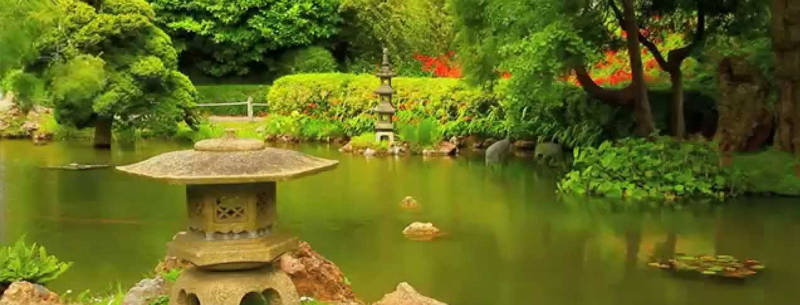One of the most visited and loved sites in Golden Gate Park, the Japanese Tea Garden in San Francisco was built for the 1894 California International Exposition. Successful Asian art dealer George Turner Marsh hired renowned Japanese gardener Makoto Hagiwara to create a Japanese village and garden on the original one-acre of land. Hagiwara planted traditional dwarf bonsai conifers, elms, cherry trees, and also designed the winding brooks with their moss-covered rocks, irises, and carp pond.
Over time, Hagiwara expanded the garden to five acres, where he and his family lived for many years until World War II and the 1942 invasion of Pearl Harbor. At that time he was forced to leave his gardens (along with 120,000 Japanese-Americans) and was moved to an internment camp inland.
The Japanese Tea Garden Today
Today, the Japanese Tea Garden San Francisco is one of the most enduring attractions in Golden Gate Park. The Zen-like setting features classic elements such as stepping stone paths, an arched bridge, a peaceful five-story pagoda, lanterns, and contemplative koi ponds. A large bronze Buddha cast in Japan in the 1790s overlooks the garden. In March and April, bright, fat pink cherry blossoms bloom throughout the garden.
https://www.youtube.com/watch?v=Gjfa3-pm1Gk
The Garden & the Tea House
Nestled in the garden, overlooking the south-facing pond, is the Japanese Tea House, which has recently been refurbished with a custom irori (family-style farmhouse table) and a sunken hearth.
The Japanese Tea House welcomes visitors to sample light Japanese snacks and try a cup of the half-dozen traditional Japanese teas it has on its menu, including Matcha — the finely milled green tea (the only form of tea served in tea ceremonies). With its distinctive taste, it’s best served in small quantities, like a shot of espresso. To balance its intense flavor, it is customarily served with rice cookies.
Japanese Tea Garden Legend
According to local legend, in the early 1900s, Mr. Hagiwara introduced fortune cookies from Japan to the United States. Originally, the cookies were made by hand using a kata (a special iron mold).
When popularity soared, Mr. Hagiwara hired a local confectioner to mass-produce them. Fortune cookies are still served to Tea Garden visitors. You’ll find one tucked inside your bowl of Japanese rice crackers at the Tea House.
- Open Daily — 365 days a year
- 72 Tea Garden Drive, Golden Gate Park
- Garden Website…
